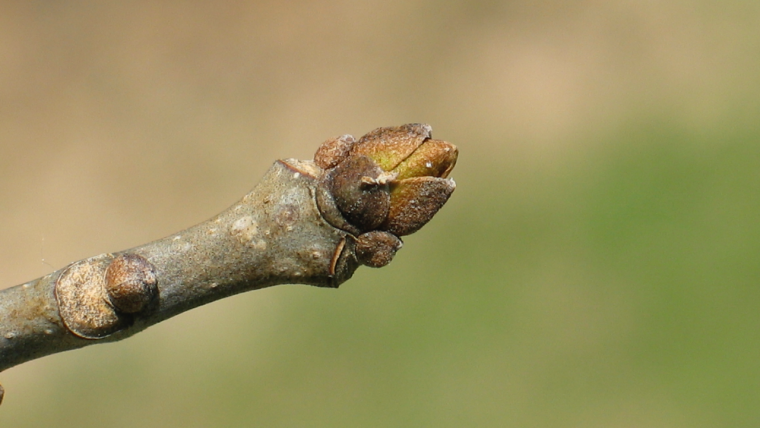
In a nutshell
As climate change continues to advance spring timing in temperate plants, scientists continue to seek models to better predict spring phenology. One way that we can predict phenology in temperature forests is with Growing Degree Days (GDDs), which track how much heat above a given threshold (such as 32 degrees Fahrenheit) has accumulated since a given date (such as January 1st). Different species of plants and animals generally require different amounts of accumulated heat to begin life cycle events such as leaf out in deciduous trees or adult emergence in insects. The USA-NPN uses this approach in our Pheno Forecast maps, which take known GDD thresholds and the amount of heat accumulated in a given year to predict life cycle events. Many factors affect the number of GDDs that are required to cue plants to being their spring activity, including climate warming, urban vs rural surroundings and winter chilling.
The authors compared phenology data collected by the Tree Spotters (a Nature’s Notebook Local Phenology Program) at an urban arboretum, the Arnold Arboretum, to those collected in a rural forest, Harvard Forest, expecting that more GDDs would be required in the urban site due to a lower amount of the winter chilling on which these trees depend. They found that the urban site actually required fewer GDDs than trees at the rural site, possibly due to other phenological cues such as light and a higher amount of accumulated winter chill than predicted. The authors also found that GDD models are less accurate for species that are the earliest to begin spring activity, such as shrubs, and may become even less accurate with climate warming.
What is special about this study?
Urban areas can provide a testing ground for the impacts of warming on plant phenology. The authors took a unique approach of comparing a rural forest to an urban arboretum; these arboreta may have great potential for research on climate change impacts and local adaptation due to their documentation of where seeds came from. The authors’ finding that trees in urban areas require less heat accumulation than those in rural areas was surprising and shows there may be other factors at play. Other variables at urban sites such as presence of roads and other urban structures, and where the temperature loggers are placed can have an impact on how GDDs are accumulated.
What does this mean for YOU?
The ability to predict spring plant phenology has implications for ecosystem services and forest management. By knowing how the growing season length will change, we can better understand changes in the amount of carbon forests can store. The change in the start of spring also has impacts on pollinators and other animals that use leaves and the organisms that depend on leaves for their food and shelter.
Citation: Chamberlain, C.J., and E.M. Wolkovich. 2023. Variation across space, species and methods in models of spring phenology. Climate Change Ecology https://doi.org/10.1016/j.ecochg.2023.100071